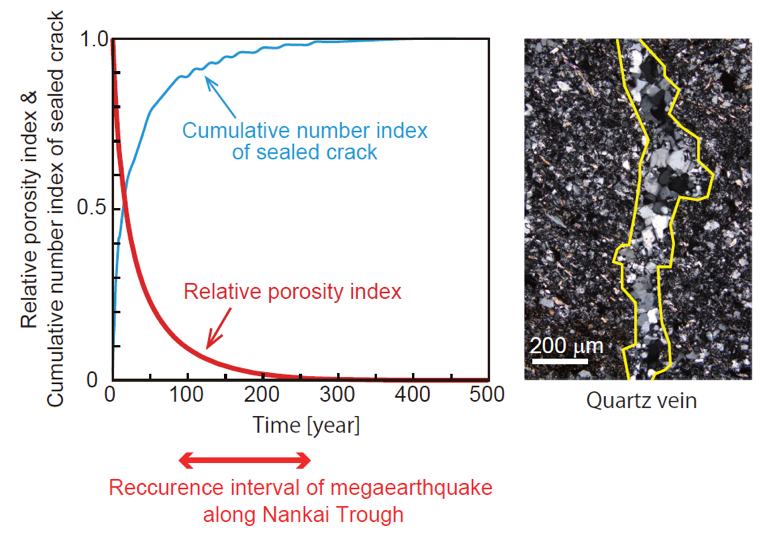A numerical model for geochemical processes to understand the recurrence intervals of earthquakes
- Formation of extensional quartz veins potentially controls recurrence intervals of earthquakes in subduction zones -
Summary of AIST Press Release on October 18, 2017
>>Japanese
Water-rock interaction such as dissolution and precipitation of minerals contributes sealing of cracks, which is assumed to play a significant role in triggering earthquakes in seismogenic zones by increasing the fluid pressure in seismogenic crust. Hanae Saishu (the Geothermal Energy Team, Renewable Energy Research Center), Atsushi Okamoto (Tohoku University) and Makoto Otsubo (Geodynamics Research Group) have proposed a new model to estimate the rate of silica precipitation in a crack around a fossilized megasplay fault, and quantified the timescale of crack sealing, suggesting the possibility of the relationship between the formation of extensional quartz veins and the recurrence interval of earthquakes in the Nankai Trough subduction zone.
The model is expected to be used for both the prediction of earthquakes and the sustainable usage of geothermal energy by giving the information of the temporal change of geological environment.
The outcome is published in Scientific Reports (Nature Publishing Group).
https://www.nature.com/articles/s41598-017-13597-5
Calculated timescale for crack sealing by quartz precipitation (left) and a thin section photograph of a quartz vein in the Nobeoka Thrust zone, Miyazaki Prefecture, southwestern Japan (right).
Publication details
Saishu, H., A. Okamoto and M. Otsubo (2017) Silica precipitation potentially controls earthquake recurrence in seismogenic zones, Scientific Reports, 7:13337, doi:10.1038/s41598-017-13597-5.


